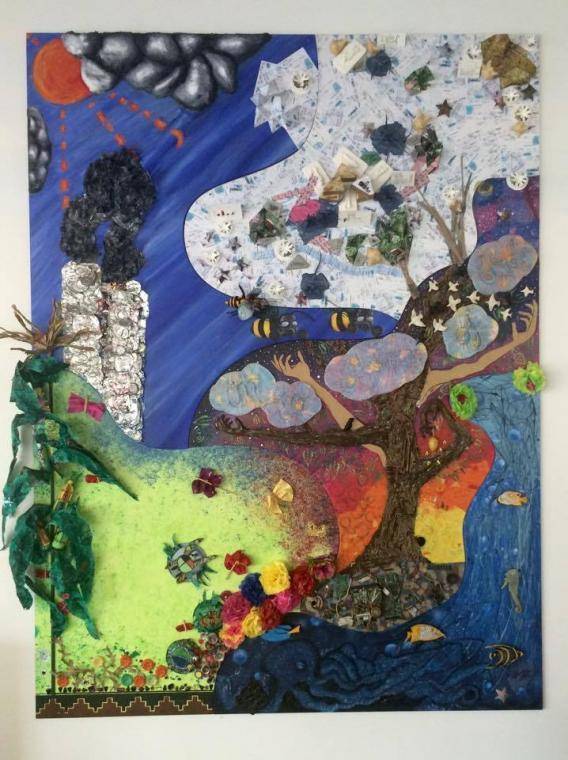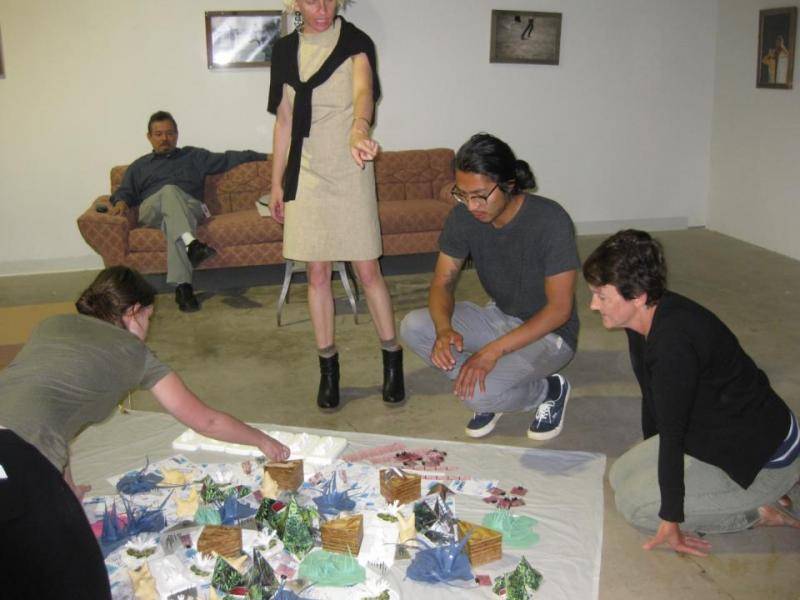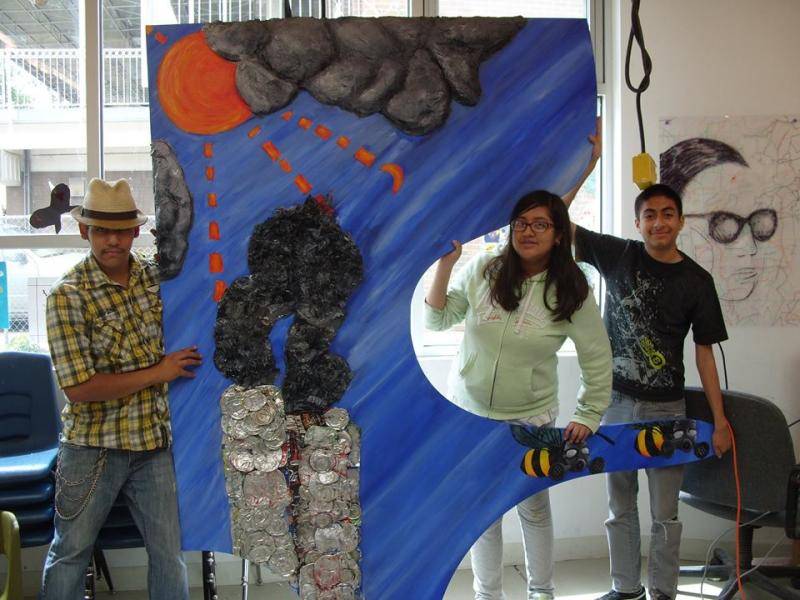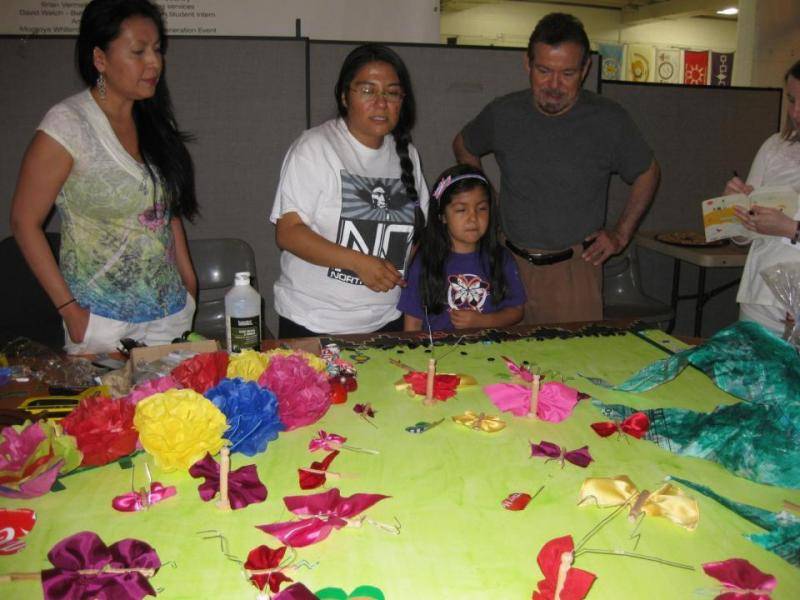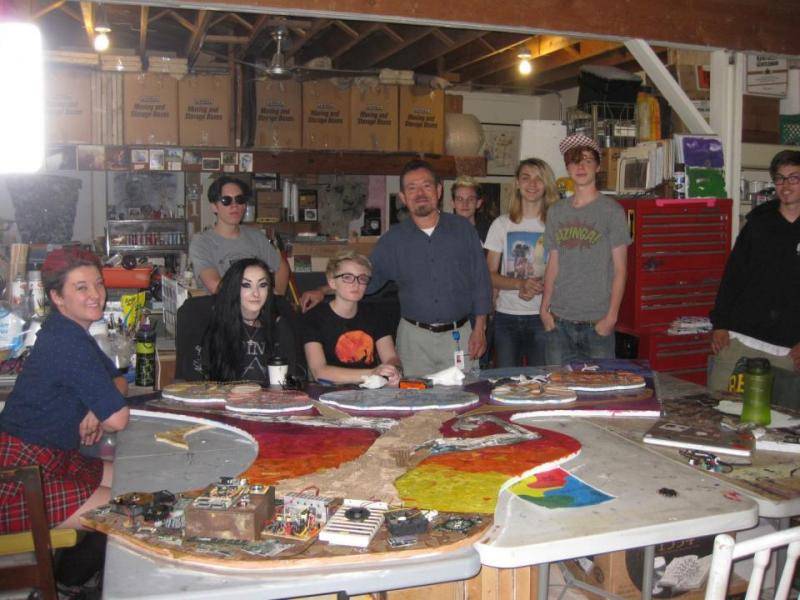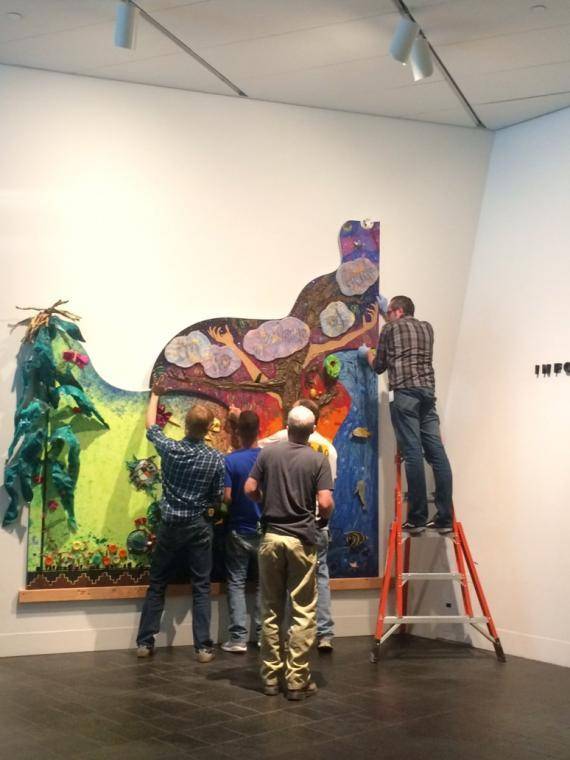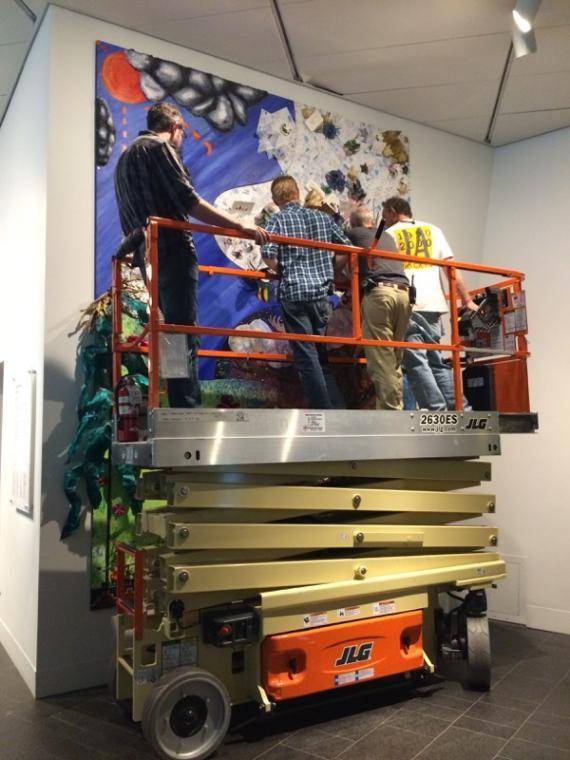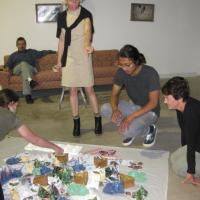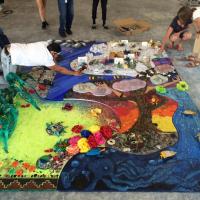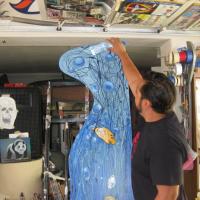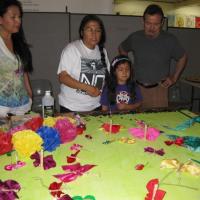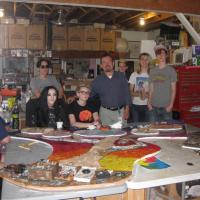This summer, the Denver Art Museum and the Biennial of the Americas collaborated with Francisco Alvarado-Juárez and five Denver artists on a community-driven art project inspired by Juárez’s work Aqua-Terra / Terra-Aqua (on view on level two of the Hamilton Building). Each artist worked with their community to create a vision of the urban environment, both natural and cultural. Together, they present a collective view of Denver now. See a list of the participants and a slide show of their work below.
The five artists and their communities worked for two months on their separate panels until the piece came together on July 14 at the Biennial of the Americas. It is now hanging at the Denver Art Museum until September 13. Below, the artists shared their experiences on this collaborative project in a Q & A.
Nicole Laurin: What has been the most enjoyable part of this project?
Rudi Monterroso: Working with great talented artists, each one with diverse style and skills. It was enjoyable to have my students evolve and see the process.
April Tsosie: The new interest in art for our youth that participated in creating the panel. This interest has carried over to new art projects the youth are working on now.
Libby Barbee: Having the opportunity to work with and get to know the other artists. It was so fun to work with other artists from RedLine and get more insight into their interests and just see how they responded to the project.
Haven Youth Project: The opportunity to participate so deeply in a community-based art project, and I really enjoyed watching each [artist's] individual artistic process.
Jay Jaramillo: Utilizing the skills of each artist to contribute to the collaboration on various components of the panels.
NL: Describe the concept behind your panel.
RM: The project helped students learn environmental awareness. We used recycled material as the main element on the panel to talk about pollution and littering. The main goal for our panel was to learn to restrict the passage of pollution and to be sensitive to the world around us.
AT: The corn is made of Japanese newspaper, which I thought gave the panel a global acknowledgement. The three sisters (corn, bean, and squash) create the perfect growing environment for each other, and are staples of numerous tribes across the country. The flowers represented Northeastern tribes, the earth represented the Southwestern tribes.
LB: Our group really focused on the environment as it relates to the Five Points Neighborhood. Before working collaboratively, I asked all of the participants in my group to choose a few questions (from ones I posed) and respond to them visually with artwork multiples. The idea was that then we would bring all of the multiples together to combine on the panel.
HYP: The main theme of our panel is community, and the importance of having a strong support network. Visually, our panel centers on a tree that has arms instead of branches. Those arms appear to be holding up the sky or the clouds or even the birds flying across the top of the piece. When our piece was finished, we had a gathering of people within our own personal support networks come to the studio to see it and place a star into the night sky. So everyone who made it possible for us to complete the project actually had a hand in completing it.
JJ: The concept of the panel by Social Action Through Art is surrounded around the notion that we all share the same water that we always have on earth. Social Action Through Art’s concept is the fact that there is man-made pollution from oil spills and plastic pollution that fill our oceans and large bodies of water that are destroying the marine ecosystems and the lives of marine animals.
Participants:
Denver Indian Center: April Tsosie (lead) Elyse Archuleta, Melanie Archulta, Aaliyah Reece Chavez, Gwyndalyn Reece Chavez, Gwyneth Chavez, Savior Hernandez, Christopher Mills, Joseph Mills, Mat Mills, Dylan Tsosie, Duane Smith, Autumn Wauneka, Delshaunia Wauneka, Shyla Wauneka, Sierra Wauneka
Downtown Aurora Visual Arts (DAVA): Rudi Monterroso (lead), Alberto Leon, Mariana Leon, and Hiram Saucedo
Haven Youth Project and Jefferson County Open School: Dylan Scholinski (lead), Faith Lynn Applegate, Julian Cohen, Nick Cozzo, Lilly Fiorino, Taylor M. Frisbee, Bailey Violet Hamam, Kai Henderson, Sam Hutchins, Jackson Pastore, Angebooty Appolinaris Sierra, the Jack of Unknown Trades, Seth H. Winkler
RedLine: Libby Barbee (lead), Ashley Frazier, Robin Gallite, George Perez, Carol Reeves, Terrence Spain, Jodi Stuart, and Tracy Tomko
Social Action Through Art: Jay Michael Jaramillo (lead) Hector Palacios, Lucas Ramirez, and Nick Trujillo
